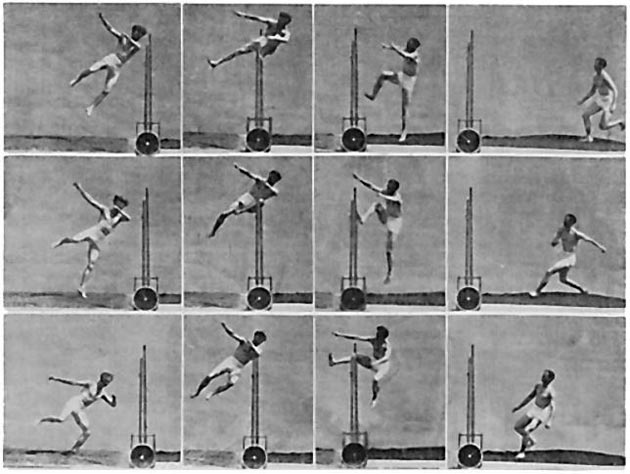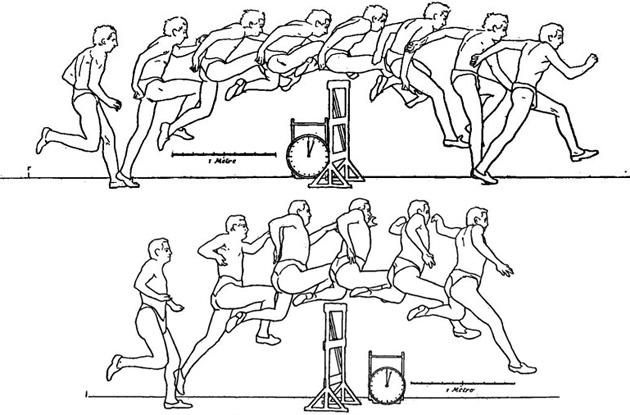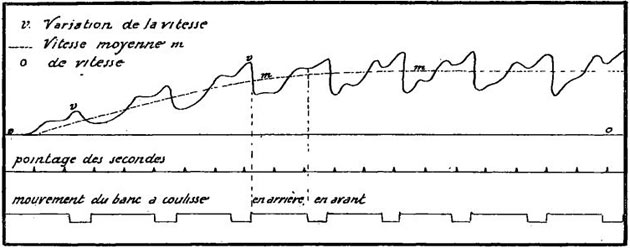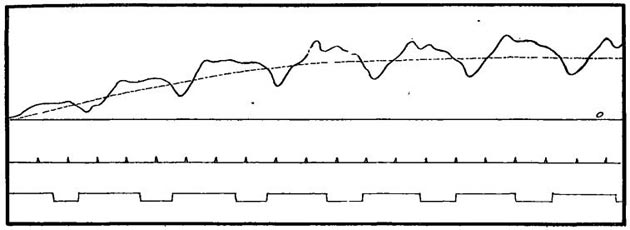At the 1900 Olympic Games in Paris there were scientific investigations performed on athletes. In addition to anthropometric measurements of athletes, some athletes were also photographed performing their sports as well as some analysis of performance such as in rowing.
Chronophotography
Etienne Jules Marey, a pioneer of chronophotography and biomechanics captured images of some of the competitors at the 1900 Olympic Games. Chronophotography is a photographic technique which captures movement over several frames, which can be subsequently arranged like an animation, enabling analysis of the athletes' movements. Such techniques are similar to today's biomechanical analysis of sporting technique using video.
Here is an example of the world record holder American Michael Sweeney showing his high jump technique (starting from top right position).
 Analysis of the high jump by the world record holder Michael Sweeney (USA).
Analysis of the high jump by the world record holder Michael Sweeney (USA). From the Official Report 1900, Fig 16. p400
One interesting finding from Marey's analysis was the comparison of America's Alvin Kraenzlein's winning hurdling action to the method of Frenchman Mr Pontié. In this example, the photographic images taken using chronophotography where drawn onto a single image, clearly showing the progression of the technique. The drawing below shows Kraenzlein taking the hurdle with a straight front leg, similar to the modern hurdler, compared to the Frenchman below.
 Comparison of hurdling technique. From the 1900 Official Report
Comparison of hurdling technique. From the 1900 Official Report Rowing Biomechanics
Rowing mechanics was studied by Dr. Lefeuvre using instruments attached to the boats. The study was designed to determine the qualities of the winning teams, by relating race times to the movements of the boat and the rower.
The figure below shows the boat speed increasing from the start up to maximum speed (taking about 20 seconds), the dotted line indicating the average speed of the boat. Each of the large oscillations of the speed curve corresponds to a full stroke of rowing.
 Analysis of rowing stroke and boat speed. From the Official Report 1900, Fig 17 p401
Analysis of rowing stroke and boat speed. From the Official Report 1900, Fig 17 p401 Analysis of rowing stroke and boat speed. From the Official Report 1900, Fig 18 p402
Analysis of rowing stroke and boat speed. From the Official Report 1900, Fig 18 p402source: Exposition universelle internationale de 1900 à paris concours internationaux d'exercices physiques et de sports – Report of the International Expo 1900 in Paris, International Events, Physical Exercise and Sports.
Related Pages
- Anthropometry at the Olympics
- Sport Specific Anthropometry
- Science and the Olympics
- Olympics Anthropology Days


 Current Events
Current Events